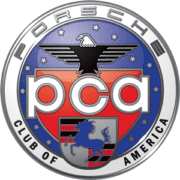Hitting Apexes… April 2015
We just held two seminars; the first on was January 25 which was our Introduction to High Performance driving. This seminar was attended by 40+ participants who are new to DE and are interested in learning more about this fantastic sport (hobby?). Welcome and I hope to see every one of you at Lime Rock, our May 3 Car Control Clinic and at Autocross events.
The second seminar was held on February 22 and was in fact two seminars. The morning session was for our Instructors and the second was for drivers who are already participating in DEs. Our guest speaker was Dave Scott, an ex-Pro Race Car driver and currently a Pro Coach to professional race car drivers as well as us “professional amateurs”. I thought I would cover a number of topics that Dave covered during both sessions and let you consider these points as you continue down the slippery slope of HPDE.
Modifications:
“Inform students to not go crazy with mods before they learn to drive. There is no point.” This is a great point as most “improvements” to cars will not make you a better driver (notice I did not say go faster) and some will actually inhibit your progress in learning how to drive. An example is going right away to R-comp tires. It is much better to learn on regular “street tires” as these provide feedback which helps you learn and are more predictable than R-comps when driven at the limit.
“Excessive level of confidence in students and new drivers”. Hmmm, what does he mean by this? Simply stated, the new generation of cars have so many electronic controls, that the car is saving the driver so much and they do not know it. The role of our Instructors is to point this out and to get you to learn how to drive really well without all the electronics saving you. Then, you will be able to drive really well and likely faster.
“How do you learn a new track? You learn the hard and complicated turns first.” What this means is that there are turns on each track that are the same from track to track. Yes you need to learn these but to drive a new track fast, you need to learn the unique ones well and then link them to the more “standard” turns.
“Brake sooner and lighter.” The point here is that too many drivers think that braking at the very last second and braking very hard is faster. Well, not so fast here. The idea is that if you are braking like this you are sending the car on its nose and then the time for the car to settle and when you can get on the gas is wasted. You are also invariably rushing and too much is going on at the last seconds and at a higher risk. Sure, brake “hard” but be smooooooth, keeping the greatest size contact patches front and rear and get on the gas sooner.
“Slow down the film strip”. The idea is not to end up rushing and learning how to be smooth especially at the end of very high speed straights leading to a corner. This goes along with the massive late brake syndrome. Brake, downshift, turn-in and squeeze the gas. Think of all the steps and don’t rush. Once you get your pace and timing, then work on braking later and getting on the gas sooner. BTW, there is a real benefit to learning how to master late braking and that is when you are trying to out brake your competitor when racing. But we are not racing.
“Pre-session prep”. The idea is to stop and think before you go out and have one goal for that run or even that day. Focus on that, do it well and then move on. But always go out with a goal.
“Traffic and Passing. Get the students (and solo drivers) to not be frustrated (or angry). Get them to focus on something else…….” The idea here is you cannot change what is in front of you and why let it get the best of you? Focus on what the car is doing, what is the car telling me, look out the window and establish turn-in points, brake markers, etc….. Do something to improve and if the train or conga line continues, head to the pits, slowly drive through the pit lane and then head back out.
“The session has just started and you are on your out-lap, drive the line and look at the flaggers and look for escape routes”. The idea here is during your first lap or two, take your time and look at each and every flagger. I wave to them out of habit as way to say thanks and it is my “habit” of ensuring a look at each station. BTW, did you ever notice that every station is not manned? Also during these first laps, re-establish your brake points and brake markers (not always nice big signs or cones), look for the apex and look where you want to be on track out. The subsequent (and faster) laps will likely go much better for you. Escape routes? Look at the corners and decide where to go and where you can go if all hell breaks loose. Where is there plenty of run-off, where can I go straight and not hurt the car if I totally blow a turn and cannot make it (ie. Turn 1 at Lime Rock has a run-off lane if you feel you are not going to make Turn 1; go straight).
“The session is over and you are in you final lap, make perfect turns along a perfect line”: OK, the heat of the battle is over, phew!! Take you time to drive a perfect lap and build in that muscle memory.
And in closing:
“Drive very gently, treat the car nicely and drive the car without drama”. Ever watch in car videos of pros? Other than the corrections they are making and many of them in anticipation of what the car is about to do (pretty cool), they are driving very smooth and if you look out the front windscreen, there is not a whole lot of drama going on. A car that is not bucking around like a bronco is a car that is being driven well and likely the faster car.
Well, by the time you read this we are either just about to head to Lime Rock or we have just held our Lime Rock event. So let’s get out there, remember some of these tips and let’s keep the shiny side up.
Tom


